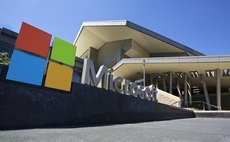Traditional Windows programs and Universal Apps will be supported in Microsoft's latest Windows 10 ARM push
Microsoft is planning another assault on the ARM architecture with a deal with Qualcomm to bring Windows 10 desktop apps to ARM microprocessors. Following on from the attempt to port Windows 8 t...
To continue reading this article...
Join Computing
- Unlimited access to real-time news, analysis and opinion from the technology industry
- Receive important and breaking news in our daily newsletter
- Be the first to hear about our events and awards programmes
- Join live member only interviews with IT leaders at the ‘IT Lounge’; your chance to ask your burning tech questions and have them answered
- Access to the Computing Delta hub providing market intelligence and research
- Receive our members-only newsletter with exclusive opinion pieces from senior IT Leaders





















